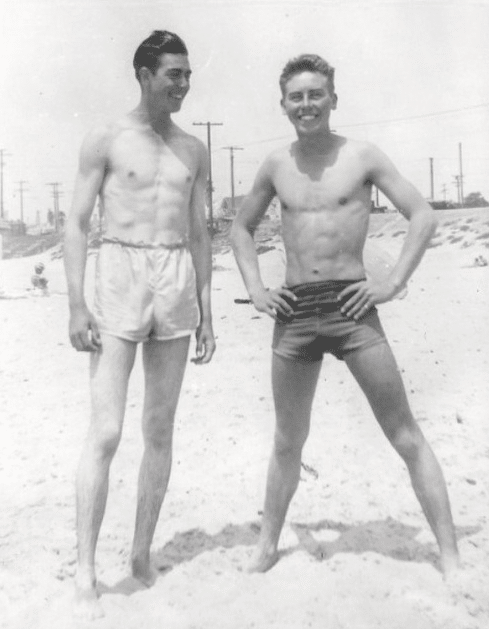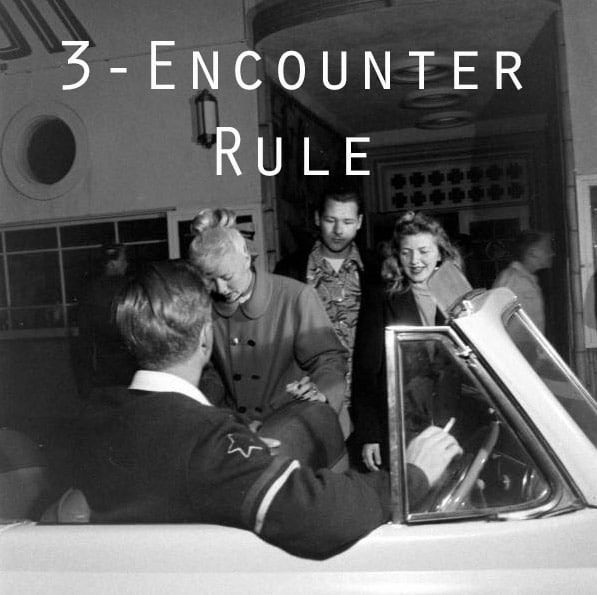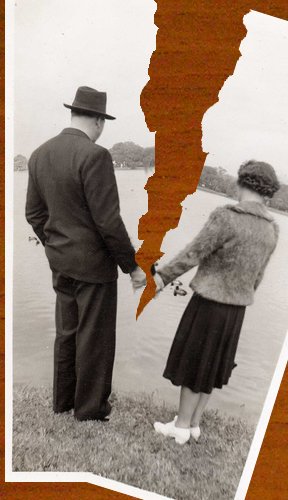
Between college and graduate school I took a gap year where I worked in a restaurant, snow skied every chance I got, and tried to figure out the rest of my life. During that year I lived in a big old suburban house near the lake along with five to eight other guys and sometimes one girl, depending on which month it was.
We had a lot of fun that year. Our driveway was filled with sports cars and motorcycles. We barbecued most meals and played music with the volume set to eleven. At night we climbed onto the roof and smoked cigars, dreaming of our futures. Occasionally we shot off firecrackers, just for the sake of sounding our barbaric YAWP.
One night we were shooting bottle rockets from an upstairs window when a loud knock sounded on the front door. It was our neighbor from across the street, and, boy, was he ticked. His roof was made of cedar shakes, he explained, and he was worried one of our stray bottle rockets would burn his house down. Would we—please!—knock it off.
Sure, sure, we said, and curtailed the activity for the night. We were polite enough to his face. But after he left we agreed among ourselves that our neighbor was only a worried fuddy duddy who’s greatest interest in life was spoiling our good time.
Fast forward twenty years.
I have become that neighbor, in many ways. If a gang of young ruffian renters moved in across the street and fired bottle rockets toward my house, I’d certainly go over and politely ask them to knock it off.
Something changes between the days of being a guy and the days of being a man. When it comes to where he lives, an immature man tends to see his neighborhood only as a place to hang his hat. But a mature man sees his neighborhood as a place he helps create.
It’s in every man’s best interest to live in the best neighborhood he can. And by “best neighborhood,” I don’t mean a gated community filled with McMansions. I mean a neighborhood filled with belonging, identity, empathy, understanding, and a strong sense of community.
To do that, you need to become a good neighbor. But how?
A few years back I edited a book called The Art of Neighboring: Building Genuine Relationships Right Outside Your Door, by Jay Pathak and Dave Runyon. Pathak is a pastor in Denver, Colorado, and Runyon works for the Denver Leadership Foundation, a nonprofit organization that helps municipal governments, businesses, and faith-based leaders unite around common causes.
The idea for the book began one day in 2009 when Pathak and Runyon gathered a group of twenty leaders to brainstorm ways they could better serve their communities. Bob Frie, mayor of Arvada (one of the cities within the greater Denver area), joined them, and the group asked Frie a simple question: How can we best work together to serve our city?
The ensuing discussion revealed a laundry list of social problems similar to what many cities face: at risk-kids, areas with dilapidated housing, child hunger, drug and alcohol abuse, loneliness, elderly shut-ins with no one to look in on them. The list went on and on.
Then the mayor said something that stopped cold the discussion. “The majority of issues that our community is facing would be eliminated or drastically reduced if we could just figure out a way to become a community of great neighbors.”
Read that quote again if you need to. Its ramifications could well affect your life.
Frie explained that neighboring relationships are more effective than civic programs because they are organic and ongoing. When neighbors are in relationship with one another, for instance, the elderly shut-ins get cared for by the person next door, the at-risk kid gets mentored by a dad who lives on the block, and so on.
The group took the mayor’s words to heart. They began a city-wide initiative aimed at helping people learn these ideas and then apply them where they lived. They called their initiative simply: The Art of Neighboring. These are some of the findings from their study.
1. Being a good neighbor begins with a positive, proactive mindset.
“The solutions to the problems in our neighborhoods aren’t ultimately found in the government, police, schools, or in getting more people to go to church,” Runyon and Pathak wrote in their book. “The solutions lie with us. It’s within our power to become good neighbors, to care for the people around us, and to be cared for by the people around us.”
That’s where becoming a good neighbor begins. It begins with how a man thinks. Instead of seeing the place he lives only as the place he hangs his hat, he begins to see the place he lives as a place he influences. He knows it’s up to him to make things better.
Author Malcolm Gladwell in The Tipping Point agrees. Exploring the “broken windows” theory first articulated several decades ago, he described how even small things done or left undone in a neighborhood can spur crime rates up or down.
When litter isn’t picked up, when graffiti remains on a wall or fence, when a window is broken but not fixed—these can all communicate that a neighborhood is declining, Gladwell wrote. And when people’s outward environments appear to decline, people tend to respond socially with less care, thus the potential for increased crime.
The opposite is true as well. Just as lapses in signs of care and concern can set off an escalation in deterioration, so can positive actions create a chain reaction of improvement. Thus, a good neighbor’s mindset is focused on how he can influence his neighborhood for the better, and he seeks to address problems while they are still small, nipping them in the bud. He feels a sense of ownership, sees his neighborhood as a reflection of himself, and knows his actions affect others. He begins to be a good neighbor simply and in small ways, undertaking the responsibility of creating an environment that he—and others—will want to live in.
2. The simplest way to become a good neighbor is to smile, wave, and get to know names.
I was out for a walk the other morning when I saw a guy walking toward me on the street. I gave him a head nod and said, “Good morning,” as he passed, like I do whenever I meet anyone in my neighborhood. But the young man didn’t even look at me or respond in any way.
He was carrying a backpack bearing the name of our town’s community college, so that gave me a clue to his standoffish behavior. He may have had a test that morning and been focused on what lay ahead. He may have not heard me, or been in a bad mood and simply didn’t want to respond.
But I suspect it was something simpler. I’m not sure his exact age, probably around 18 or 19, but I suspect he was simply thinking more like a child and less like a man.
In this day and age, children are correctly taught never to talk with people they don’t know. If a 44-year-old stranger said good morning to my 10-year-old daughter as she waited for the school bus, I would strongly urge her to ignore him, even to run away.
But adult-aged neighbors need to be re-taught to engage with people they don’t know, at least when it comes to those who live near to them. If a car drives down my street and I’m outside mowing the lawn, I make it a habit to smile and wave. I see plenty of other adults doing the same thing.
The embryo of good neighboring is proactive friendliness. It means initiating a positive interaction with those you come in contact with. The simplest way to do that is to smile, wave, and learn your neighbors’ names. If someone moves in next door, take them an apple pie. If your neighbor goes out of town, offer to watch out for his place while he’s away.
3. Being a good neighbor means you treat others as you want to be treated.
Some years back when my wife and I bought our first house, we became fast friends with our next door neighbors, a couple about our age. We’d eat dinner together, we’d talk over the fence, we’d mow our lawns for each other when out of town.
They were the neighbors from heaven.
Then they moved out and another couple moved in. The woman was okay, but the guy was a grade-A jerk. There’s no polite way to say that. He was surly and rude, he made noise at all hours of the night, he held wild parties and left empty beer bottles on his front lawn. Other neighbors would actually complain to us—the people who lived closest to them—asking us to do something about it. Cowards.
They were the neighbors from hell.
The point is that when it comes to living in close proximity to other people, any number of relational issues can arise. No neighborhood is perfect, and it takes tact, timing, wisdom, forgiveness, boundaries, and at times courage to live alongside of other people.
Still, the best way to create a good neighborhood is to be a good neighbor yourself. As an adult, you might live in a suburban neighborhood, a rural area, or in an apartment in the city, yet wherever you live, the same principle holds true: your actions will affect others, and their actions will affect you.
This means you’re mindful of your actions. You realize you don’t live in a frat house anymore. You keep your music turned to a volume where it can’t be heard outside your walls. You pick up after your dog and keep him on a leash if your yard is unfenced. You carry your trash cans back inside the garage the same day as your trash is picked up.
When it comes to where you live, you help set the tone.
I haven’t talked to Runyan and Pathak for awhile now, so I don’t know all the positive changes that resulted from their initiative. But I do know that word began to catch on about being a good neighbor, and a number of positive stories poured back their way. The initiative has even begun to catch on in other cities and states. The authors have received letters from mayors, city managers, and police officers, describing how the initiative is paying winning dividends.
There were stories of block parties being held, of neighborhood movie nights, of single mothers being helped out with free groceries and diapers, of neighbors who came down with cancer receiving weeks of free meals.
Many of the stories reflected smaller, simple interactions. One man wrote to say that he shoveled the driveway of his neighbors when they were away on vacation. He’d never spoke to his neighbors before, but now they always smile and say hello.
About a year after the initiative began, Runyon and Pathak received an e-mail from their assistant city manager, Vicky Reir, who wrote:
Dave and Jay:
I’ve been working in the city manager’s office for thirteen years. This is the first time that I can remember going through an entire winter without receiving a single request for assistance in shoveling a driveway. No one has asked for help for themselves or an aging parent, not one call. Maybe this is a coincidence, but I wonder if this is because of the neighboring movement. I guess there’s no way to know for sure, but I thought you’d be encouraged.
“When the people who live around each other become closer in their relationships, great things happen,” Pathak and Runyon wrote. “Start now by doing the small things well, and commit to good neighboring as a lifestyle. You have been invited to begin a sacred journey, one that has the potential to change your block, your city, and possibly the world.”
Question: Why is it important for a man to become a good neighbor? How have you seen this play out where you live?
____________________
Marcus Brotherton is a regular contributor to Art of Manliness. Read his blog, Men Who Lead Well, at: www.marcusbrotherton.com
Tags: Friendship







